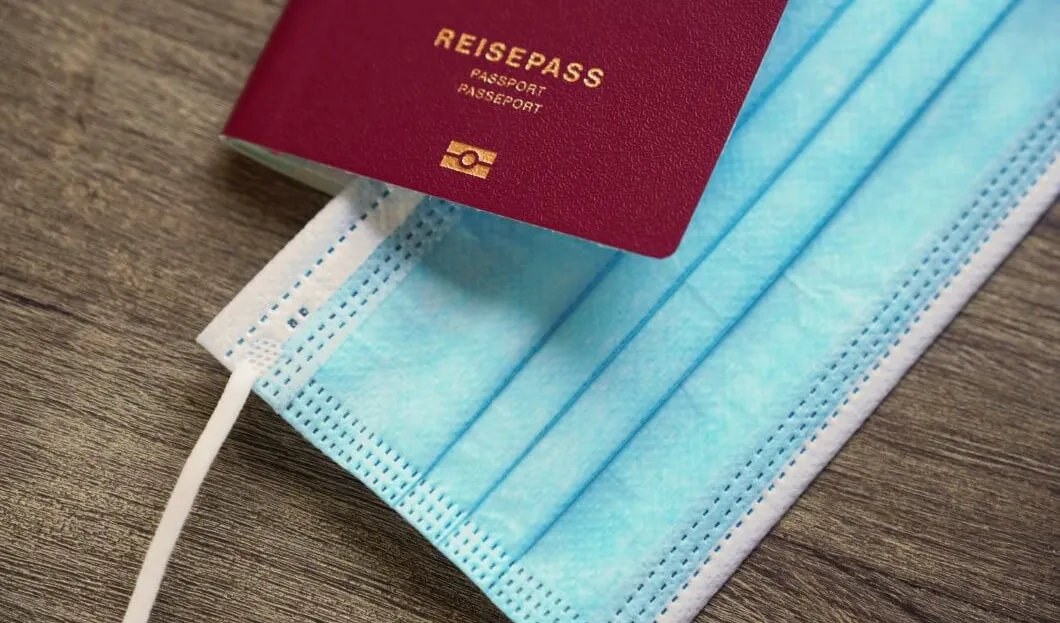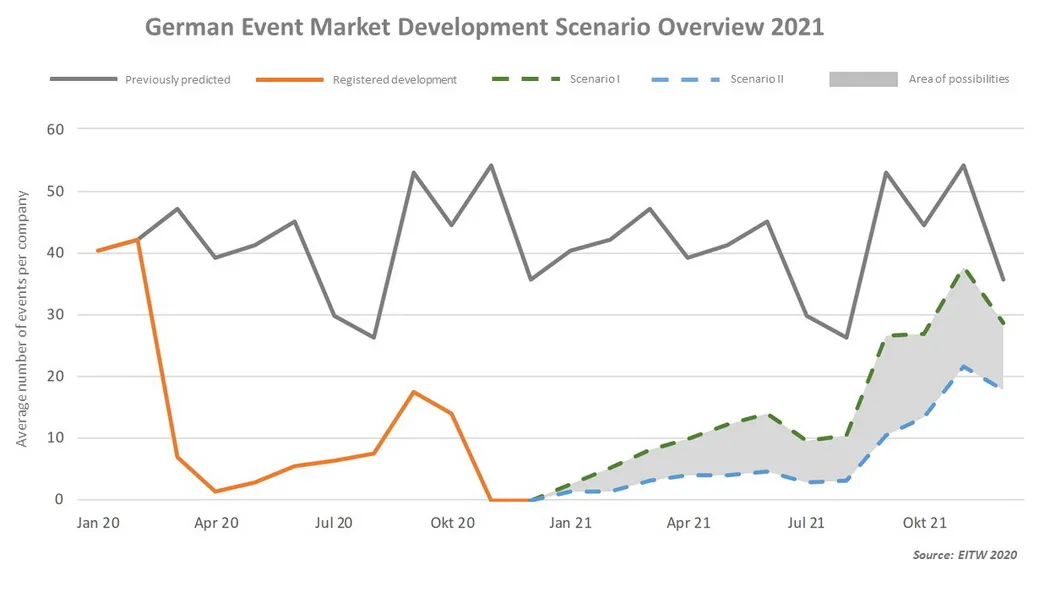
The European Institute for the MICE industry (EITW) has analyzed the scenarios for the effects of the Covid-19 crisis on the MICE market in Germany. According to the institute, meetings, congresses and events will recover more restrained or more dynamically in 2021, depending on the further occurrence of infection and medical and health economic factors. Regardless of the speed, one thing is already clear: the market is changing both in terms of supply and demand.
During the spring, EITW had already developed several scenarios for the recovery of the MICE market after the pandemic. These have now been updated based on the findings of the last few months. Which of the scenarios is most likely to occur depends on a variety of variables, such as the development of vaccines or the availability of rapid Covid-19 tests.
Scenario 1
Based on the “light lockdown” at the end of 2020, scenario 1 assumes that the market will gradually recover from next spring, somewhat stronger in the summer, but not yet return to the pre-Covid-19 levels. In terms of volumes, almost 40% of the originally planned events would take place in 2021 with around 30% of the originally planned participants.
Scenario 2
Scenario 2 predicts a slower, regulated recovery from spring 2021 with stronger growth not until autumn. During the entire year, only a fifth of the planned events would be organized with only 15% of the expected participants. It should be noted, however, that these values focus purely on the physical presence of the participants and do not yet include the increasing relevance of virtual or hybrid formats.

Structural Changes
From a purely quantitative point of view, according to current knowledge, the recovery of the MICE market will extend beyond 2021. However, a qualitative structural change in the market has already begun but was massively accelerated by the pandemic.
The digital transformation and the megatrend of sustainability are creating innovative concepts. The trend towards hybrid and spatially distributed events will continue to grow. People will return to face-to-face events, but in most cases, these will be expanded virtually and thus open to larger communities.
And many providers of conference and congress venues are already reacting accordingly. Half of the event centers, conference hotels and event locations surveyed for the EITW study stated that they had invested in technology for hybrid or digital formats due to the pandemic. The other half was already equipped with it.
“In addition to the necessary technical infrastructure, the optimal design of the participant experiences will be even more important in the future. On-site and virtual participants have very different needs – this has to be taken into account when designing the content and strategy of an event,” says Matthias Schultze, Managing Director of the German Convention Bureau (GCB).
“With the proven implementation competence and diverse innovative approaches, German event organizers are ideally positioned for this,” he added.
Innovation More Important Than Ever
The current and the next focus of the innovation network Future Meeting Space, initiated by the GCB and the Fraunhofer Institute for Industrial Engineering and Organization IAO, also deals with the change in the MICE market and the new ecosystem that is developing from it.
These changes were accelerated during the pandemic. A prime example of this is the trend towards hybrid and digital events, which require the development of sustainable and innovative event formats, services and business model.
Innovation is more important than ever for the design of a sustainable event landscape in the MICE market.
The aim of the entire Future Meeting Space research process is to analyze the challenges of the outlined change, use scenarios for real, to develop hybrid and virtual meetings, and thus to make a contribution to securing Germany’s excellent position as a meeting and congress venue in the long term.










